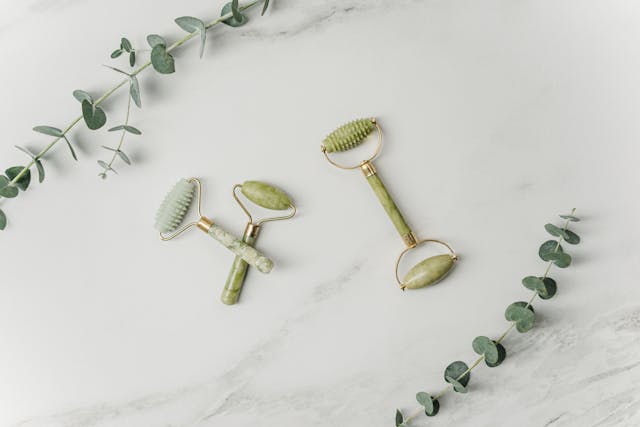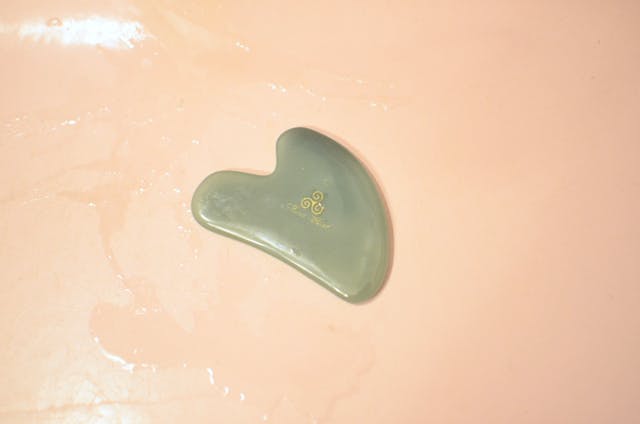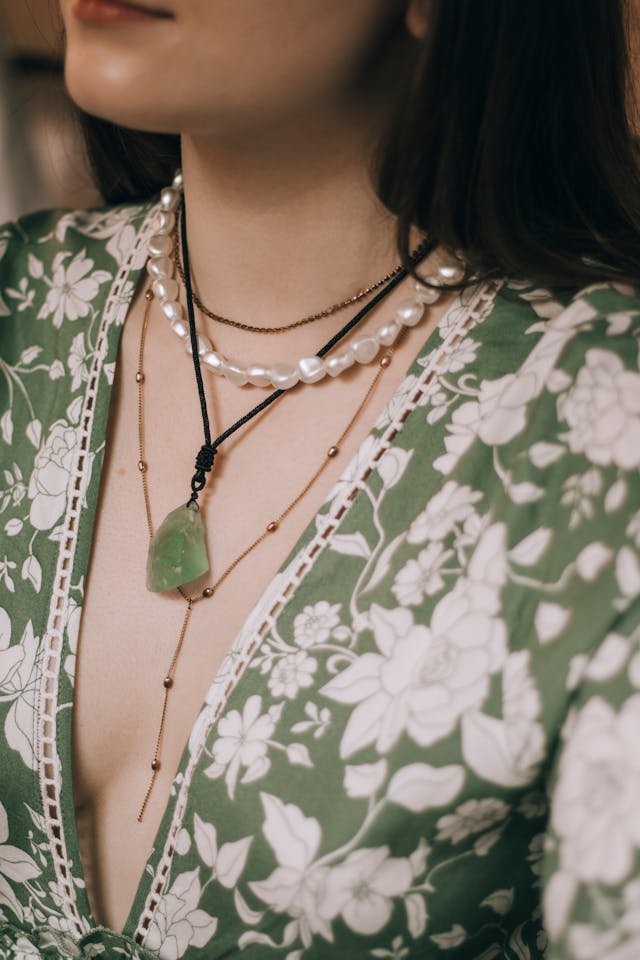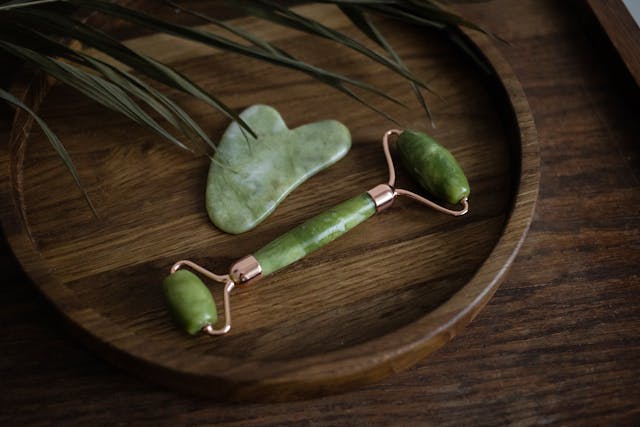Jade, a stone that has captivated cultures for millennia, carries with it a history rich in mystery, beauty, and spiritual significance. When you hold a piece of jade in your hand, you’re not just holding a crystal; you’re holding a connection to the earth’s deep-seated secrets, a piece of history that has shaped civilizations, and a talisman believed to harbor powerful healing properties.
The allure of jade begins with its aesthetic appeal. Its smooth surface, cool to the touch, invites a sense of tranquility. The colors of jade, ranging from deep, verdant greens to delicate whites, exude a serene beauty that is both calming and mesmerizing. This stone’s natural luster gives it a gentle glow, as if it were lit from within by an ancient spirit. The tactile experience of jade is equally enchanting; its polished surface feels almost silky, and this tactile pleasure deepens the stone’s allure. When you run your fingers across jade, it is as if you are touching the essence of nature itself—smooth, unyielding yet tender, like the earth in its most harmonious form.

Jade’s beauty extends far beyond its appearance and touch. This stone has been revered for thousands of years, and its history is woven into the very fabric of human civilization. In ancient China, jade was considered the “imperial gem,” a symbol of purity and moral integrity. The Chinese associated jade with the Confucian virtues of wisdom, justice, compassion, modesty, and courage. It was believed that jade could protect the wearer, promote longevity, and bring good fortune. The ancient Chinese even attributed spiritual qualities to jade, seeing it as a bridge between the physical and the spiritual worlds. In Central and South America, the ancient Mayans and Aztecs also valued jade, using it for tools, jewelry, and sacred objects. They believed that jade could cure ailments and keep evil spirits at bay. Even today, jade remains a potent symbol in many cultures, representing balance, peace, and wisdom.
Jade’s geographical origins are as diverse as its cultural significance. The most famous sources of jade are in China and Myanmar, where jadeite, the more precious form of jade, is found. Myanmar, in particular, is renowned for producing the finest quality jadeite, known for its vivid green color and high translucency. Nephrite, another variety of jade, is more commonly found in regions such as Canada, Russia, and New Zealand. The nephrite jade from New Zealand, known as “pounamu” or “greenstone,” holds a special place in Māori culture, symbolizing strength, prosperity, and spiritual power. In Canada, the indigenous peoples of British Columbia have long used jade for carving and as a symbol of good luck and protection.

The special nature of jade lies not just in its beauty and history, but in its metaphysical properties. Jade is believed to be a powerful stone for healing and emotional well-being. It is often referred to as the “dream stone,” as it is said to help with the recall of dreams and to promote insightful, lucid dreams. Many people believe that jade can attract love, nurture relationships, and promote harmony. It is also thought to be a stone of abundance, attracting prosperity and encouraging wise spending. For those who are feeling anxious or overwhelmed, jade is said to bring a sense of calm and stability, helping to clear the mind and promote emotional balance. Its soothing energy can be especially helpful in releasing negative thoughts and promoting a positive outlook on life.
Physically, jade is believed to have a variety of healing properties. It is often used in crystal healing to support the kidneys and adrenal glands, remove toxins from the body, and promote overall physical healing. Some believe that jade can boost the body’s self-healing abilities, improve longevity, and strengthen the immune system. Jade is also thought to be beneficial for the skin, helping to reduce puffiness, and it is commonly used in facial rollers and gua sha tools for its cooling and soothing effects. The stone’s connection to the heart chakra makes it a powerful tool for emotional healing, promoting feelings of love, compassion, and forgiveness.

What makes jade truly special is not just its physical beauty or its healing properties, but the way it seems to act as a muse for those who work with it. Artists and artisans have long been inspired by jade, creating intricate carvings, jewelry, and sculptures that reflect the stone’s inherent beauty and spiritual significance. The act of working with jade, whether in carving or simply holding a piece in meditation, can be a deeply spiritual experience. The stone’s energy seems to guide the artist’s hand, resulting in creations that are not just aesthetically pleasing, but imbued with a sense of peace and balance. Jade’s ability to inspire creativity and enhance spiritual connection makes it a valuable tool for artists, writers, and anyone looking to tap into their inner muse.
In terms of mental and physical health, jade’s influence can be profound. By promoting emotional balance, jade can help to reduce stress and anxiety, leading to a more peaceful and centered state of mind. This sense of calm can have a positive impact on physical health as well, reducing the harmful effects of stress on the body and promoting overall well-being. For those who suffer from insomnia or restless sleep, placing jade under the pillow is said to promote deep, restful sleep and protect against nightmares. Jade’s connection to the heart chakra also means that it can help to heal emotional wounds and promote a sense of self-love and acceptance. By working with jade, whether through meditation, wearing it as jewelry, or simply keeping a piece nearby, many people find that they are better able to navigate the challenges of life with grace and resilience.

To keep jade at its most powerful, it is important to clean and recharge the stone regularly. Jade can absorb negative energy over time, so cleansing it is essential to maintaining its healing properties. One of the simplest ways to clean jade is to rinse it under cool, running water. As you do this, you can visualize any negative energy being washed away. After cleansing, jade can be recharged by placing it in the moonlight overnight. The energy of the moon is believed to cleanse and recharge crystals, restoring them to their full power. Some people also like to bury jade in the earth for a few hours or overnight, as this allows the stone to reconnect with its natural source of energy. If you choose to do this, be sure to mark the spot where you buried the stone, so you don’t lose it! Another method of recharging jade is to place it on a bed of selenite or clear quartz crystals, which are known for their ability to cleanse and amplify the energy of other stones.
The beauty of jade lies not only in its physical appearance, but in its deep connection to the earth, its rich history, and its powerful healing properties. This stone, revered for thousands of years, continues to captivate and inspire those who encounter it. Whether you are drawn to jade for its aesthetic appeal, its historical significance, or its potential to enhance your mental and physical well-being, there is no denying the special nature of this remarkable crystal. Jade is more than just a stone; it is a bridge between the physical and the spiritual, a muse for the creative mind, and a powerful tool for healing and self-discovery. By incorporating jade into your life, you can tap into its ancient wisdom and experience the peace, balance, and harmony that this beautiful stone has to offer.

